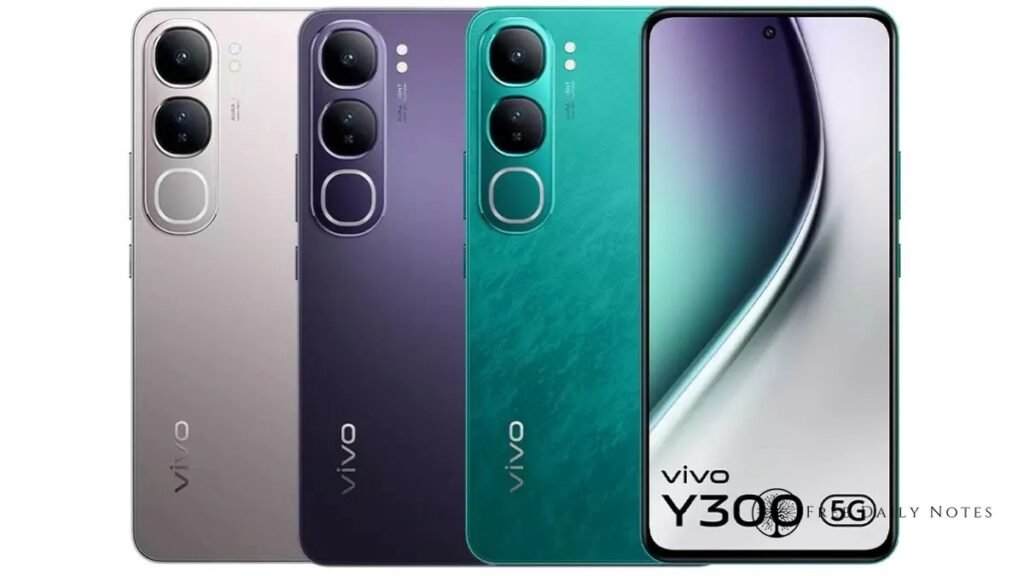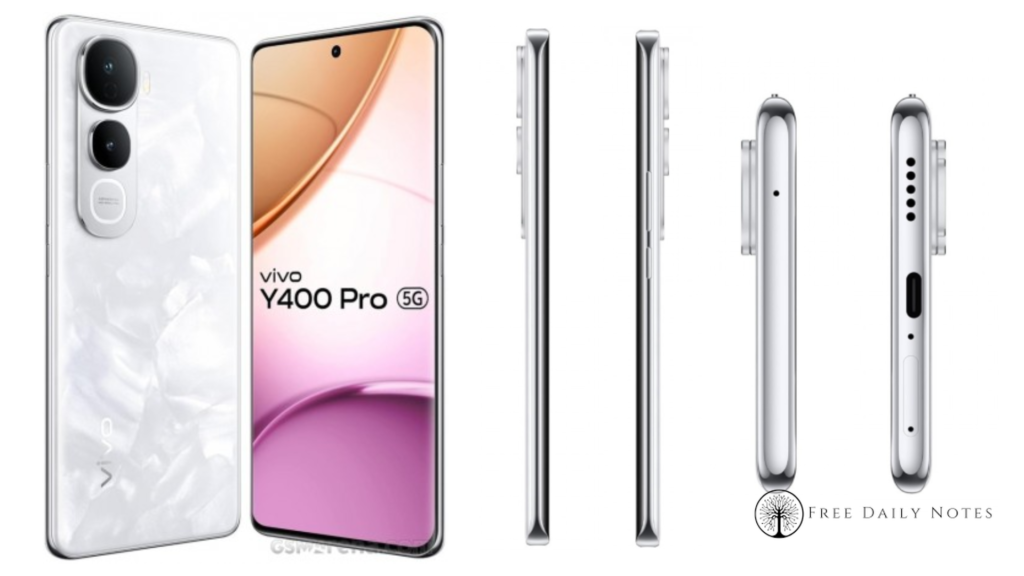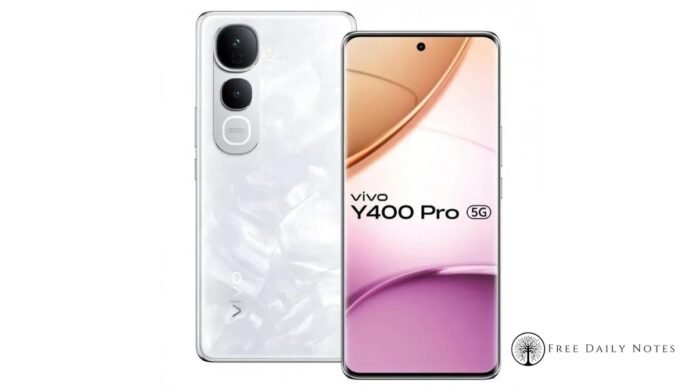I remember when smartphone shopping used to be simple. You’d walk into a store, pick something within your budget, and be done with it. Those days feel like ancient history now, don’t they?
Especially here in India where we’re absolutely spoiled for choice. I’ve spent the last week with the Vivo Y400, the company’s latest mid-range offering, and honestly? I’ve got some thoughts.
Look, I’m not going to pretend this is just another review where I rattle off specifications that you could find on any product page. Instead, I want to share what it’s actually like living with the Y400 in India’s unique smartphone ecosystem where value and features battle it out in perhaps the world’s most competitive market.
After years of testing dozens of smartphones, I’ve developed a pretty good sense of what matters. Battery that lasts through Delhi’s infamous traffic jams? Essential. A camera that doesn’t make your Taj Mahal photos look like they were taken with a potato? Non-negotiable.
So let’s dive into what makes the Vivo Y400 tick, and more importantly, whether it deserves your hard-earned rupees in a market where every other day seems to bring a “revolutionary” new device.
How the Vivo Y400 Fits into India’s Crowded Smartphone Market
The mid-range segment in India is brutal, absolutely cutthroat. Every manufacturer is fighting tooth and nail for your attention, and frankly, your wallet. Vivo has been quietly building a reputation beyond just selfie cameras, and the Vivo Y400 seems to be their attempt at consolidating their position without making too much noise about it.
Priced somewhere between ₹18,000 to ₹20,000, the Y400 sits in that sweet spot that many Indian consumers gravitate toward. Not budget, not premium—just that perfect middle where you hope compromises are minimal.
But here’s the thing about this price bracket in India: expectations are MASSIVE. We expect flagship-like features at half the price. Unreasonable? Maybe. But that’s just how it is, and manufacturers know it.
What makes the Vivo Y400 interesting is how it doesn’t try to excel spectacularly in any single department. Instead, it takes a more balanced approach. I actually appreciate this strategy, though it does make the phone slightly harder to market in YouTube thumbnails with shocked-face emojis and “BEST CAMERA EVER??” clickbait.
When you compare it to competitors like the Realme Number Series or the Redmi Note lineup, the Y400 isn’t trying to win a specifications war. It’s aiming for that user who wants a reliable daily driver without the headache of weighing endless feature comparisons. Wait, I’m getting ahead of myself. Let me get into the details first.
Handling the Vivo Y400 | Design That Speaks Volumes

I still remember unboxing the Y400. My first thought wasn’t particularly profound—just “Hmm, that’s heavier than I expected.” At around 190g, it’s not a lightweight phone by any means, but there’s something reassuring about that heft. It doesn’t feel cheap.
The design language Vivo has adopted with the Vivo Y400 is… well, it’s attractive without being particularly distinctive. Let’s be honest, at a distance, it could be mistaken for several other phones.
But up close, there are some nice touches. The curved edges make it comfortable to hold during those endless scrolling sessions that we’re all guilty of. The back panel has this subtle shimmer effect that catches light in an interesting way without screaming “look at me!”—something I personally prefer over the gaudy gradient finishes that were everywhere last year.
Speaking of the back panel, mine picked up fingerprints faster than my mom spots dust in a “clean” room. If you’re obsessive about smudges like I am, you’ll either want the matte finish option or to slap a case on it immediately. Actually, Indian weather being what it is, you’ll probably want a case anyway. Those monsoon surprise showers have claimed more than one of my previous phones.
The button placement on the Vivo Y400 feels natural enough, though I did accidentally hit the volume down instead of the power button more times than I’d like to admit during the first couple of days.
The fingerprint sensor is embedded in the display and works reasonably well, though not quite as lightning-fast as some premium offerings. Still, for its price point, no complaints here.
One design element that genuinely impressed me was the headphone jack. Yes! The Y400 still has one! As someone who still uses wired headphones on my daily Mumbai local train commute, this is a surprisingly welcome feature in 2025.
The Vivo Y400’s Display | More Than Just Specifications
Let’s talk about that screen, shall we? The Vivo Y400 sports a 6.67-inch AMOLED display with a 120Hz refresh rate. On paper, that sounds impressive for this price range. But specs never tell the whole story, do they?
In daily use, the display is actually quite lovely. Colors pop without looking artificially oversaturated, and the blacks are properly deep as you’d expect from AMOLED technology. Watching episodes of “Panchayat” on this screen was genuinely enjoyable, with good contrast and reasonable brightness levels.
But and there’s always a but the auto-brightness feature is a bit… indecisive? It’s like that friend who can never choose what to eat at a restaurant. In changing light conditions, I noticed the display brightness would fluctuate noticeably before settling on a level, which got annoying quickly. I ended up just setting it manually most of the time.
The 120Hz refresh rate makes scrolling through Instagram and Twitter feel smooth, though I did notice occasional stutters when rapidly switching between heavy apps. Not a dealbreaker by any means, but worth mentioning.
One thing that genuinely impressed me was the display’s legibility in direct sunlight. I was at Marine Drive last weekend, phone in hand trying to navigate to a café, and I could actually see the screen without having to create a shadow with my other hand. If you’ve ever tried using a budget phone in Mumbai’s midday sun, you’ll understand why this is worth celebrating.
The bezels around the display are relatively slim, with a small punch-hole camera that’s easy to ignore after the first day of use. The screen-to-body ratio is impressive, giving the phone a modern look that belies its mid-range pricing.
Under the Hood | The Vivo Y400’s Performance Realities
Right, let’s get into what powers this thing. The Vivo Y400 comes equipped with a MediaTek Dimensity 7200 processor. MediaTek chips used to be sneered at by tech enthusiasts, but they’ve really stepped up their game in recent years.
In day-to-day use, the Y400 handles most tasks without breaking a sweat. WhatsApp, Instagram, Gmail, YouTube the usual suspects all run without any noticeable lag. Multitasking is generally smooth, though I did notice that keeping more than 15-20 apps in memory starts to show some strain.
Gaming performance is where things get interesting. Look, if you’re expecting to play Genshin Impact on maxed-out settings, you’re in for disappointment. But for more casual gaming needs your BGMI on medium settings, Call of Duty Mobile, or endless rounds of Ludo King during office breaks the Y400 does just fine.
I ran some benchmark tests, but honestly, those numbers don’t tell you much about real-world performance. What matters more is that I never felt the phone was struggling to keep up with my daily usage.
The Y400 comes with 8GB of RAM and 128GB of storage in the base variant, which feels adequate in 2025. There’s also a 256GB option available for about ₹2,000 more, which might be worth considering if you’re the type who never deletes photos or keeps every WhatsApp video your relatives send. And yes, there’s a microSD card slot, another feature that’s increasingly rare but appreciated in the Indian context where we love getting more for our money.
Heat management is surprisingly good. Even after extended gaming sessions or camera use, the phone got warm but never uncomfortably hot. That’s particularly noteworthy given how quickly phones tend to heat up in India’s climate.
But here’s where I’ve got a bit of a gripe: Vivo’s FunTouchOS. While it’s come a long way from its iPhone-mimicking days, it still comes with a fair amount of bloatware. Some can be uninstalled, some can’t. The first hour with this phone involved me aggressively removing apps I knew I’d never use. Not the end of the world, but a cleaner software experience would have been nice.
The Vivo Y400’s Camera System | Expectations vs. Reality

Camera capabilities often make or break smartphones these days. The Y400 comes with a triple camera setup: a 64MP main sensor, an 8MP ultrawide, and a 2MP macro. Up front, there’s a 32MP selfie camera.
Now, the number of megapixels doesn’t tell the whole story, something I wish more people understood. The quality of the sensor, the image processing, and the software optimization all play crucial roles.
In good lighting conditions, the Vivo Y400‘s main camera takes genuinely nice photos. Colors are vibrant without being oversaturated, and there’s a decent amount of detail. Portrait mode creates reasonable edge detection, though it sometimes struggles with complex outlines like curly hair or intricate jewelry, something even much more expensive phones often get wrong.
Low-light photography is… well, it’s acceptable. The night mode does help brighten things up, but don’t expect miracles. Photos taken in dimly lit restaurants or evening outdoor settings show noticeable noise and loss of detail. Still, they’re usable for social media, which is what most people care about anyway.
The ultrawide camera is useful for those landscape shots or large group photos, though there’s a noticeable quality drop compared to the main sensor. And the 2MP macro? Let’s be real, it’s there to make up the numbers. I tried taking some close-up shots of flowers and coins, but the results were mediocre at best. This seems to be an industry trend that needs to die putting in low-quality sensors just to claim “triple camera” on the box.
Selfies from the 32MP front camera are quite good, especially in good lighting. Vivo has always emphasized their selfie cameras, and it shows here. There’s a decent amount of detail, and the beauty mode isn’t as aggressive and artificial-looking as it used to be in older Vivo phones. You can actually take a selfie that still looks like you, which is refreshingly honest in the age of heavy filters.
Video recording tops out at 4K/30fps, which is standard for this price range. The footage is decent with good light, though stabilization could be better. For casual video recording family functions, quick clips for social media, documenting that street food vendor making pani puri with impossible speed it does the job.
One camera feature I genuinely enjoyed was the “Double Exposure” mode, which lets you blend two images together for creative effects. It’s a niche feature, sure, but I had fun playing around with it during a recent trip to Pondicherry.
Battery Life | The Vivo Y400’s Everyday Endurance
In my experience, phones with great battery life rarely make headlines, but phones with poor battery life always do. Fortunately, the Y400 falls into the former category. With its 5,000mAh battery, it easily lasted me through full days of moderate to heavy use.
My typical day involves a lot of WhatsApp messages, emails, about an hour of YouTube videos during lunch, some music streaming during my commute, and occasional GPS navigation. With this kind of usage, I consistently ended the day with 25-30% battery remaining. Not revolutionary, but certainly reliable.
The included 44W fast charger is a nice touch. In my tests, it took the phone from 10% to 60% in about 30 minutes, and a full charge in just under an hour and fifteen minutes. That’s plenty fast for most scenarios, even those mornings when you forget to charge overnight and need a quick top-up before rushing to work.
What impressed me more than the raw numbers was how well the battery held up during specific high-drain situations. A 30-minute video call to my parents dropped the battery by only about 7-8%, which is quite efficient. Similarly, an hour of BGMI gaming consumed around 15-18% battery, reasonable for a mid-range device.
Another thing worth mentioning is the battery health features. The Y400 includes options to limit charging to 80% or enable slower overnight charging, both designed to extend the battery’s lifespan. In a country where we tend to keep our phones for years rather than months, these longevity features are genuinely useful.
The Vivo Y400’s Software Experience | Hits and Misses

Software can make or break a phone experience, and the Y400 runs on Vivo’s FunTouchOS based on Android 14. Now, I’ve already mentioned the bloatware issue, but there’s more to discuss here.
The good: FunTouchOS has matured significantly over the years. The interface is clean and customizable, with a decent selection of themes and icon packs if you’re into personalizing your phone. The system animations are smooth, and navigation gestures work well.
The Vivo Y400 also includes some genuinely useful features like “Ultra Game Mode” which optimizes performance during gaming and blocks notifications, and “Dynamic Effects” which adds subtle animations to the interface. There’s even a “Kid Space” feature that lets parents control which apps their children can access something many Indian families might appreciate.
But there are frustrations too. Some of Vivo’s stock apps send unnecessary notifications that feel promotional. The settings menu is a bit convoluted, with some options buried deep where you wouldn’t expect them. And occasionally, I noticed slight delays when pulling down the notification shade or accessing the control center.
Vivo promises two years of major Android updates and three years of security patches for the Y400. That’s not as generous as what Google or Samsung offers for their devices, but it’s in line with what most mid-range phones provide. Still, in a market where people tend to keep their phones longer, I’d like to see more extended software support.
Is the Vivo Y400 Worth Your Money in 2025?
After spending a solid week with the Vivo Y400 as my primary device, the big question remains: should you buy it?
The answer, as with most tech products, is “it depends.” If you’re looking for a reliable mid-ranger that doesn’t excel spectacularly in any one area but delivers a balanced experience across the board, the Y400 is worth considering. Its combination of decent performance, good battery life, acceptable cameras, and modern design makes for a compelling package at its price point.
The phone shines particularly in everyday reliability. It’s not the phone that will impress your tech-enthusiast friends with obscure features or benchmark scores. Instead, it’s the phone that quietly does what you need it to do, day in and day out, without drama or frustration. There’s something to be said for that kind of dependability.
However, if you’re particularly focused on one specific aspect like if camera quality is your absolute priority, or if you’re a heavy gamer there might be more specialized options in the same price range that better meet your specific needs. The Realme GT series might offer better performance for gamers, while the Redmi Note series often emphasizes camera capabilities at similar price points.
For the average Indian consumer who wants a well-rounded phone that will last a couple of years without breaking the bank, the Vivo Y400 represents good value. Not exceptional value, not revolutionary value, but solid, dependable value. And sometimes, that’s exactly what you need.
FAQ:
1. How much does the Vivo Y400 cost in India, and is it available in offline stores?
The Vivo Y400 is priced at approximately ₹18,999 for the 8GB/128GB variant and ₹20,999 for the 8GB/256GB variant in India. Yes, it’s widely available both online and in offline retail stores across India. Vivo has a strong offline presence in India, so you should be able to find it in most major electronics retailers and Vivo-exclusive stores.
2. Does the Vivo Y400 support 5G networks in India?
Yes, the Vivo Y400 is fully 5G compatible with all major Indian telecom operators including Jio, Airtel, and Vi. It supports multiple 5G bands that are relevant to the Indian market, ensuring good connectivity as 5G continues to roll out across more cities in India.
3. How does the Vivo Y400 camera perform compared to other phones in this price range?
The Vivo Y400‘s camera system performs admirably for its price segment, particularly in good lighting conditions. While it may not match the camera quality of phones that cost ₹25,000 or more, it holds its own against direct competitors. The main 64MP sensor delivers detailed shots with good color accuracy in daylight, though low-light performance is just adequate rather than exceptional.
4. What accessories come included with the Vivo Y400 in the box?
When you purchase a Vivo Y400 in India, the box includes the phone itself, a 44W fast charger, a USB-C cable, a clear protective case, a SIM ejector tool, and basic documentation. Unlike many other manufacturers, Vivo still includes a charger in the box, which is certainly appreciated given the trend of removing these accessories.
5. How is the gaming performance on the Vivo Y400 for popular Indian games like BGMI and Free Fire?
The Vivo Y400 handles popular mobile games in India quite capably. For titles like BGMI, you can expect smooth gameplay at medium graphics settings with stable framerates. Free Fire runs even better, allowing for high graphics settings without significant performance issues. The phone’s cooling system manages heat relatively well during extended gaming sessions, which is important considering India’s climate.
6. Is the Vivo Y400 water resistant for use during the Indian monsoon season?
While the Vivo Y400 doesn’t have an official IP rating for water and dust resistance, it does feature basic splash resistance. This means it should survive light rain or accidental water splashes, but it’s not designed to be submerged in water. During monsoon season in India, it’s still advisable to use a waterproof case or pouch for additional protection.






